AAQEP Accreditation
Standard 1 Aspect B
Standard 1B: Evidence shows that, by the time of program completion, candidates exhibit knowledge, skills, and abilities of professional educators appropriate to their target credential or degree, including: Learners; learning theory, including social, emotional, and academic dimensions; and application of learning theory
Data Sources & Analysis
Data Source 1
CSU Educator Quality Center Completer Survey
Description of Data Source:
Each year, the CSU Educator Quality Center administers a survey to program completers
to learn their perceptions of how well the program prepared them in a number of areas
aligned with the California Commission on Teacher Credentialing’s Teaching Performance
Expectations (TPE). Program completers from all CSU campuses are invited to respond
to each item on a 1-5 scale, where 1 indicates they believed that they were “not at
all” prepared and 5 indicates they believe they were “very well” prepared.” Survey
results can either be disaggregated by item or aggregated by Teaching Performance
Expectation (TPE).
Perspective Captured from Data Source: Completer
Rationale for using Data Source:
CSU Educator Quality Center Completer Survey captures program completers’ anonymous
perspectives of how well the program prepared them at the conclusion of their teaching
credential coursework and field experiences, providing valuable insights into their
perceptions of the program.
California Teacher Preparation Expectations (TPE), developed by the California Commission for Teacher Credentialing, describe the set of knowledge, skills, and abilities candidates should have by the time they complete their credential program. Within the Single Subject program, the TPEs are used to design course syllabi and ensure coursework aligns with the expectations.
Specific Elements of Data Source:
Aggregated responses to items aligning with each of the following TPEs:
- TPE 1. Engaging and Supporting All Students in Learning
- TPE 2. Creating and Maintaining Effective Environments for Student Learning
- TPE 4. Planning Instruction and Designing Learning Experiences for All Students
Definition of Success for Each Element:
As a program, our goal is for 80% of completers to indicate they were well or very
well prepared in each of the TPE areas.
Displays of Analyzed Data:
Figure 1: 2017-2018 Completer Survey Responses for Items Related to TPE1: Engaging and Supporting
All Students in Learning 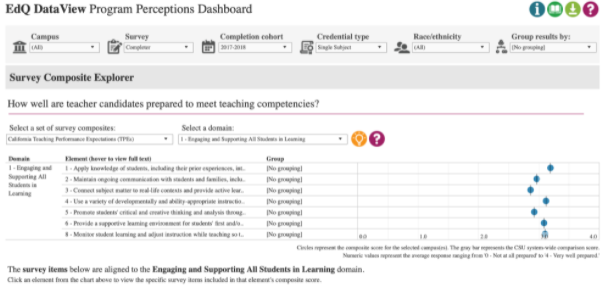
Figure 2: 2018-2019 Completer Survey Responses for Items Related to TPE1: Engaging and Supporting
All Students in Learning 
Figure 3: 2019-2020 Completer Survey Responses for Items Related to TPE1: Engaging and Supporting
All Students in Learning 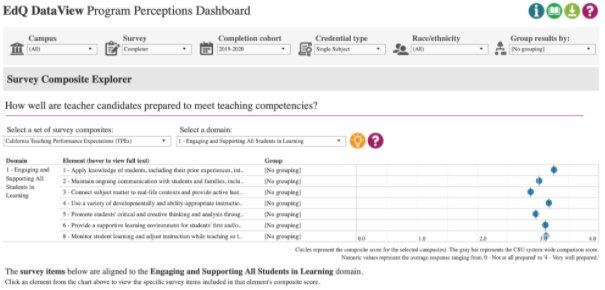
Figure 4: 2017-2018 Completer Survey Responses for Items Related to TPE 2: Creating and Maintaining
Effective Environments for Student Learning 
Figure 5: 2018-2019 Completer Survey Responses for Items Related to TPE 2: Creating and Maintaining
Effective Environments for Student Learning 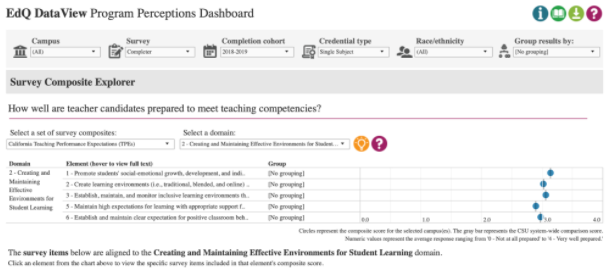
Figure 6: 2019-2020 Completer Survey Responses for Items Related to TPE 2: Creating and Maintaining
Effective Environments for Student Learning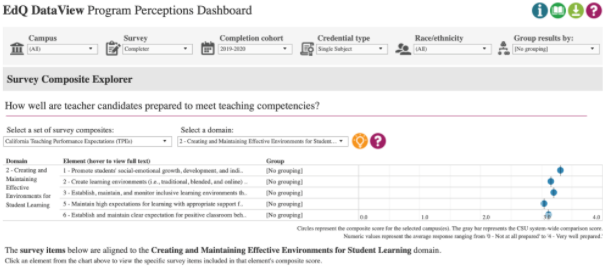
Figure 7: 2017-2018 Completer Survey Responses for Items Related to TPE 4: Planning Instruction
and Designing Learning Experiences for All Students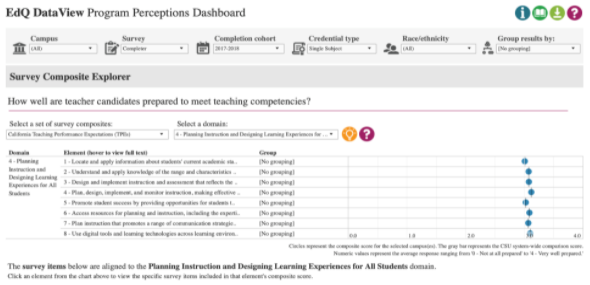
Figure 8: 2018-2019 Completer Survey Responses for Items Related to TPE 4: Planning Instruction
and Designing Learning Experiences for All Students
Figure 9: 2019-2020 Completer Survey Responses for Items Related to TPE 4: Planning Instruction
and Designing Learning Experiences for All Students
Link to Full Dataset: The link to the full dataset is unavailable. However, if reviewers would like to view the CSU Educator Quality Center Data Dashboards, we are happy to set up a time to provide them access by sharing screens in a Zoom session.
Interpretation of Data:
The range of mean scores for 2017-18 TPE 1 (Figure 1) are 2.8 to 3.2 with a mean calculation of 3.0, indicating that the candidates believed
they were adequately prepared. The range of mean scores for 2018-19 TPE 1 (Figure 2) are 2.7 to 3.3 with a mean calculation of 3.0 indicating that the candidates believed
they were adequately prepared. The range of mean scores for 2019-20 TPE 1 (Figure 3) are 2.8 to 3.2 with a mean calculation of 3.0, indicating that the candidates believed
they were adequately prepared. Resulting in an overall mean of 3.0.for 2017-18 for
TPE 1.
The mean range of scores for 2017-18 TPE 2 (Figure 4) are 2.9 to 3.2 with a calculation of 3.05 indicating that the candidates believed they were adequately prepared. The mean range of scores for 2018-19 TPE 2 (Figure 5) are 2.7 to 3.1 with a mean calculation of 2.90, indicating that the candidates believed they were basically prepared.The mean range of scores for 2019-20 TPE 2 (Figure 6) are 3.1 to 3.3 with a mean calculation of 3.2, indicating that the candidates believed they were adequately prepared. Resulting in an overall mean of 3.25 for 2017-18 for TEP 2.
The mean range of scores for 2017-18 TPE 3 (Figure 7) are 3.0 to 3.1 with a mean calculation of 3.05 indicating that the candidates believed they were adequately prepared. The mean range of scores for 2018-19 TPE 3 (Figure 8) are 2.9 to 3.1 with a mean calculation of 3.0, indicating that the candidates believed they were adequately prepared. The mean range of scores for 2019-20 TPE 3 (Figure 9) are 2.8 to 3.2 with a mean calculation of 3.0, indicating that the candidates believed they were adequately prepared. Resulting in an overall mean of 3.0.for 2017-18 for TEP 3.
Data Source 2
CI 152 Learning Theories Application Assignment Scores
Description of Data Source:
All candidates in the Single Subject program are required to take CI 152, Adolescent
Development and Learning. The focus of this course is to prepare teachers to develop
a framework for systematically examining the development of the secondary school learner
and the learning process.
Perspective Captured from Data Source: Faculty
Rationale for using Data Source:
The CI 152 Learning Theories Application assignment focuses on candidates' application
of various learning theories to better inform their future teaching. In the assignment,
candidates submit a 2-min video in which they reflect on a prompt that frames the
learning theory. They do this for 8 modules, ranging from theories of attention, neuroscience,
cognitivism, behaviorism, motivation, social learning theories, assessment and technology.
Sample prompt:
- How many types of motivational theories have you learned in this module?
- Which one stands out to you and why?
- Name an application of this theory in your personal or professional life.
Definition of Success for Each Element:
Full points (20) indicate candidates’ proper understanding. A revision is encouraged
but required for all scores less than 15. CI 152 Learning Theories Assignment Rubric
Displays of Analyzed Data:
Scores for each student from all 8 modules of the application of learning theories
assignment. The assignment is worth 160 points that counts as 53% of the total grade.
Unfortunately, only data from one section of CI 152 for each of the past three semesters
were available for analysis.
| Semester | N, students (x8 modules) | Score (Mean, SD) |
|---|---|---|
| Spring 2021 | 20 (160) | 20, SD=0.0 |
| Fall 2020 | 24 (192) | 19.9, SD=0.27 |
| Spring 2020 | 25 (200) | 19.9, SD=0.25 |
Link to full dataset: CI 152 Course Data Summary
Interpretation of Data:
This course assignment is a cross-sectional example of the coursework that is designed
with the intention of not only addressing key learning theories and their applications.
Revisions are allowed and encouraged for all students who do not receive a full score
of 20, and students who receive a 15 or lower are required to revise within 7-days
of scoring and feedback. For this reason, all scores on this assignment at the time
of completion reach a score of 20, approximately. In future, it would be interesting
to also collect scores on students' first attempts and compare those for growth through
revisions.
Still, overall, scores demonstrate that candidates do develop knowledge of key learning theories and understand how to apply those theories in practice.
Data Source 3
CI 152 Learning Theory Description Rubric
Description of Data Source:
In CI 152, Adolescent Development and Learning, candidates prepare and submit a learning
theory description. In this assignment, they observe and analyze a teaching episode
using the educational and developmental learning theory terminology learned during
this course, using an Observational Study rubric.
Perspective Captured from Data Source: Faculty
Rationale for using Data Source:
By using learning theories they have learned in CI 152 to analyze a teaching episode,
candidates have the opportunity to apply that knowledge.
Specific Element of Data Source:
One section of CI 152 candidates’ overall scores on Learning Theory Description assignment
Definition of Success for Each Element:
The programmatic goal is for all students to score in the A range on this assignment
(16-20 points total) (Assignment Rubric)
Links to Data Set: CI 152 Course Data Summary
Note: CI 152 courses in Canvas require instructor login. In addition, students did not provide consent to have their written work examined outside of a classroom context.
Displays of Analyzed Data:
| Spring 2019 N =37 | Mean 19.5 | SD = .8 |
|---|---|---|
| Fall 2019 N = 36 | Mean =20.0 | SD = .05 |
| Fall 2020 N = 59 | Mean = 19.6 | SD = .7 |
| N = 132 | Grand Mean = 19.7 | SD Ave: .51 |
Interpretation of Data:
All candidates showed complete success in learning and applying developmental theories.
Scores that were not a perfect 20 resulted from students not fully using all the theoretical
terminology; they understood the theory, but did not explain using formal theory terms.
All candidates could identify theory in the lesson observed and explain how it helped
the lesson to be successful.
Reflections from students show that all students start to recognize the importance and value of these theories are integral to a well designed and implemented lesson. Students also state that this allowed them to more fully comprehend the theories when they need to identify them and explain how and when they were put into practice. They also show application of this knowledge later in the course when they begin to dissect written lesson plans based on Piaget, Erikson, and Vygotsky, showing that any good lesson has all these theories implemented and addressed.
Next Steps:
As can be seen from the pooled course data, CI 152 allocates 8 course sessions (out
of a total 16) on developmental theory applications. Students need to demonstrate
full comprehension and application of the theories, and do so, as indicated by the
mean scores on relevant work. In CI 152, there are also additional assignments which
serve to further students’ applications of these theories to better understand students
and lesson planning in the classroom environment, integrated with other common objectives
addressed by some of the other AAQEP aspects.
In order to address what we found, we will continue to provide updated assignments emphasizing these vital theories for successful classroom practice. When students understand these theories, they have the power to analyze any lesson, and, if a theory has been found to not be covered, update that lesson to include the missing theory. As a result, the lesson will be more likely to be successful. For example, when a lesson is designed to meet developmental needs, students who have those needs being met by the lesson will see the value and purpose driven by their developmental needs.
To evaluate our efforts in this area, we will correlate other assignment pieces back to the developmental theories, and expect to find rigorous connections between the initial journey into understanding development to other later applications and extensions (for example, a correlation to an authentic assessment final disaggregated by test items focusing on developmental theory).
It's also important to note that the CSU Completer results show a high level of learning theory integration as a result of having taken our courses as the overall mean for the three TPE ranges (TPE, 1, 2, & 3) is 3.62. These results can be specifically triangulated with the CI 152 course assignment results of (overall mean 19.7) indicating that the program is adequately preparing it’s candidates Learners; learning theory, including social, emotional, and academic dimensions; and application of learning theory.